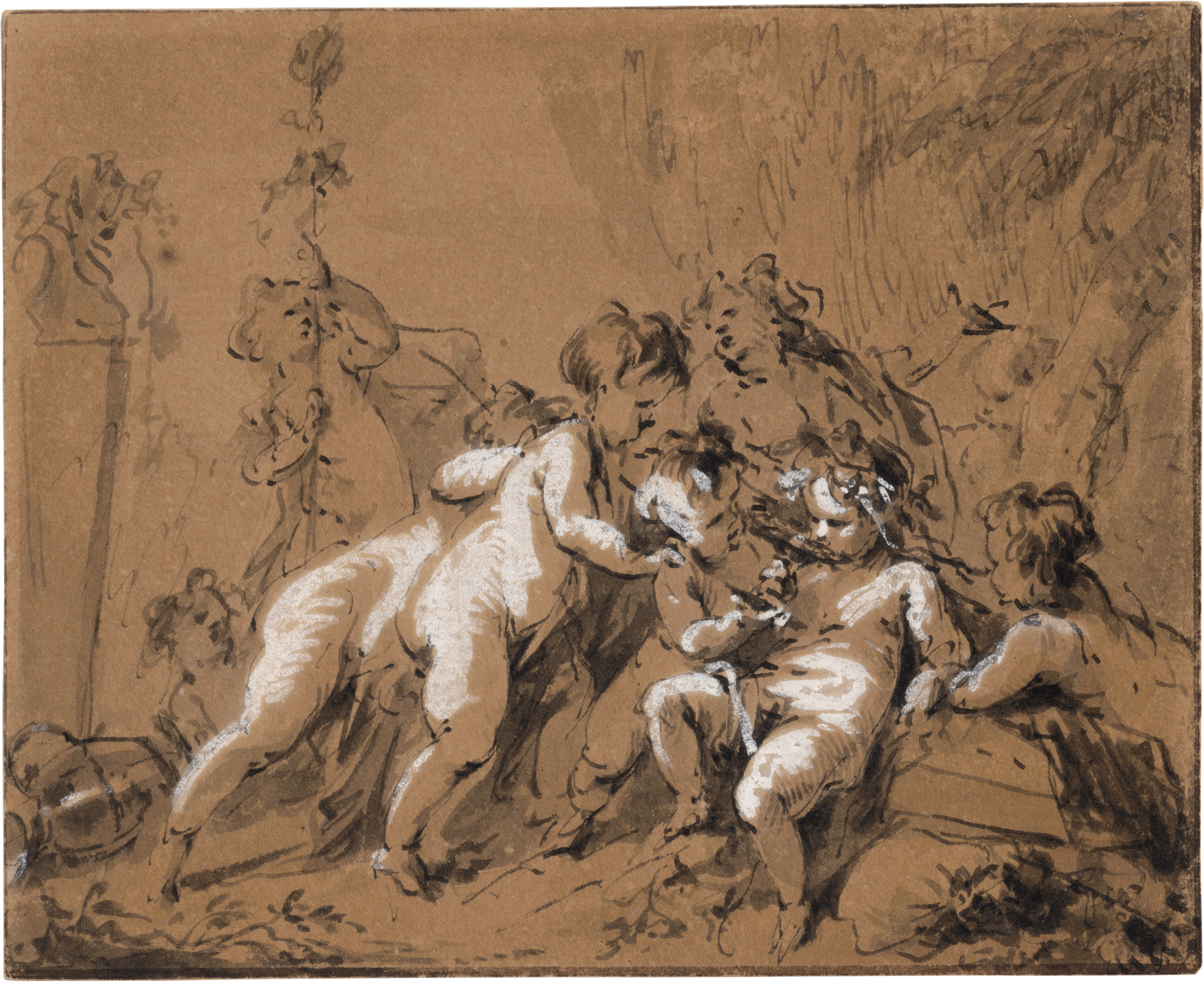Loading the page ...
Jacob de Wit
(1695–1754, Amsterdam)
Putti at Play in a Pleasure Garden. Pen and point of brush and brown-black ink, on brown grounded paper, white heightening; framing line in pen and brown ink. 10.2 x 12.5 cm.
Jacob de Wit op zijn best! (Jacob de Wit at his best!). Despite its small format, this pictorially framed drawing exerts a powerful visual impact. Putti cavort in a pleasure garden and pay their respects to one of their companions, who plays the wine god Dionysus. The intimate scene has been dashed off with great confidence and consummate skill, as if no effort were involved. The flowing white heightening produces a striking chiaroscuro effect.
Jacob de Wit from Amsterdam is known today primarily as a major master of decorative painting. He went to Antwerp in 1708 and was a pupil of Jacob van Hal from 1710. He became a member of the city’s Guild of St Luke in 1714. After returning to Amsterdam, de Wit executed a large number of ceiling paintings, mantelpieces, supraportas and bas-relief imitations in grisaille, which established his reputation and made his name known far beyond the borders of Holland. At that time, he also turned his attention to other genres, such as religious painting, and his painting style reveals various sources of inspiration over the years. There can be no overlooking echoes of Flemish Baroque painting, especially the work of Pieter Paul Rubens, in his early work, while stylistic elements from the Rococo and early Classical periods come to the fore later on in his career. Verso with an extensive inscription in pen and ink by the Marquis de Calvière (1693-1777), one of the most prominent French art collectors of the 18th century.
Contact us for further information